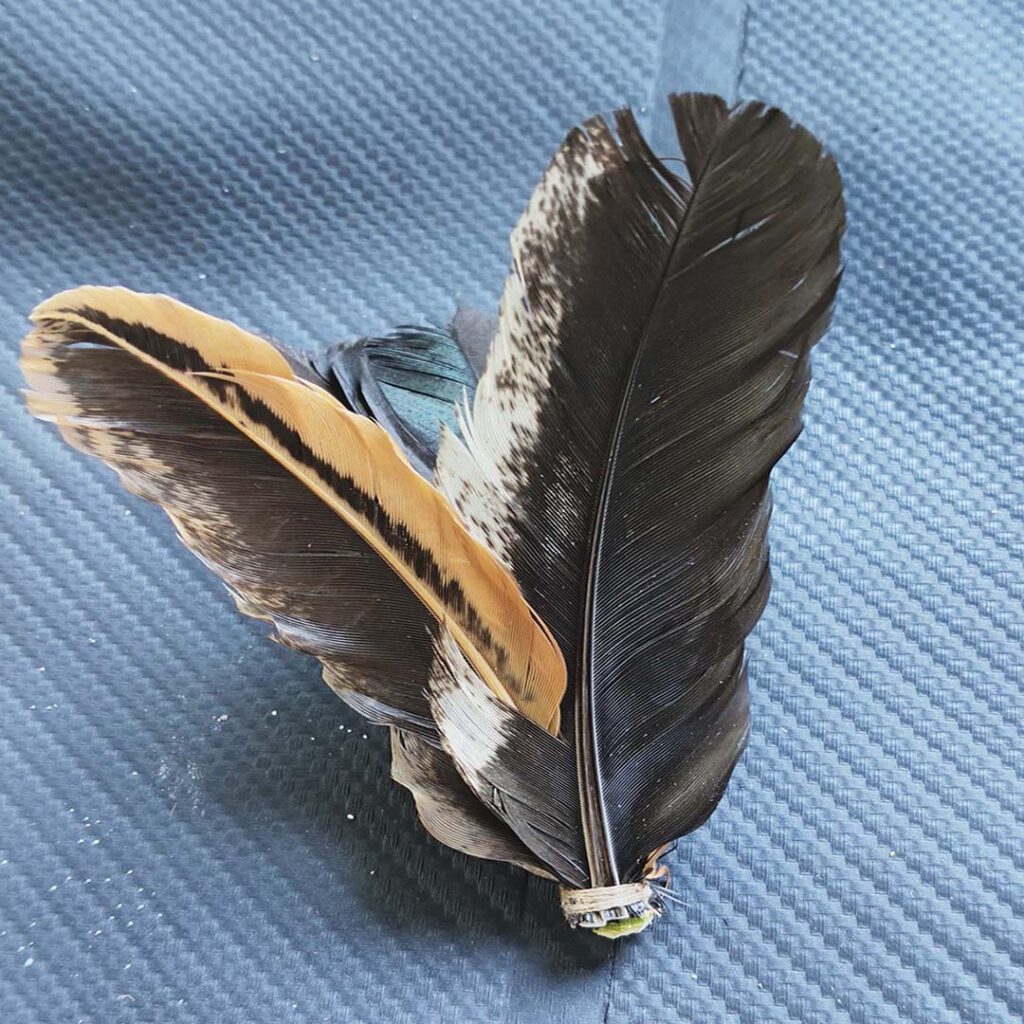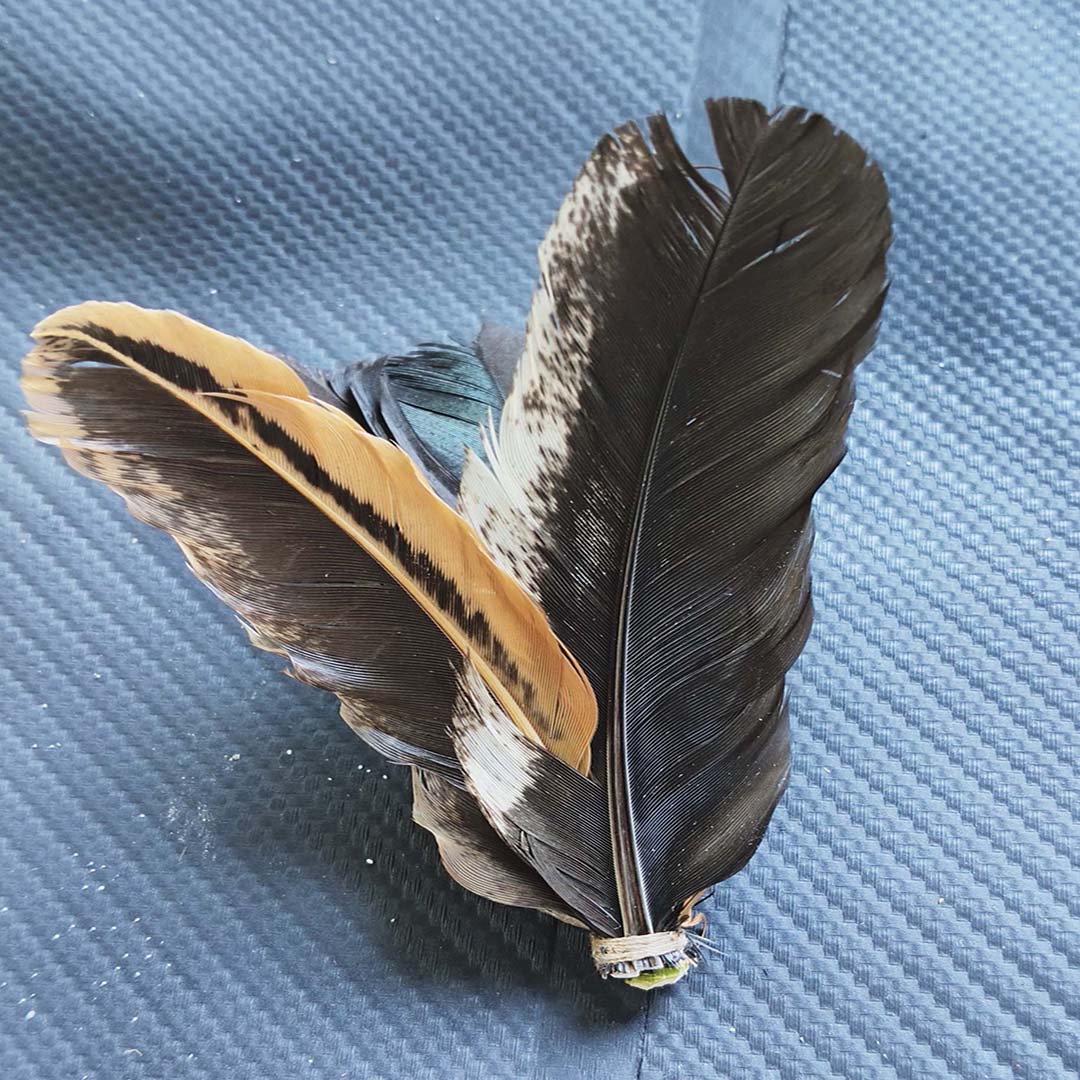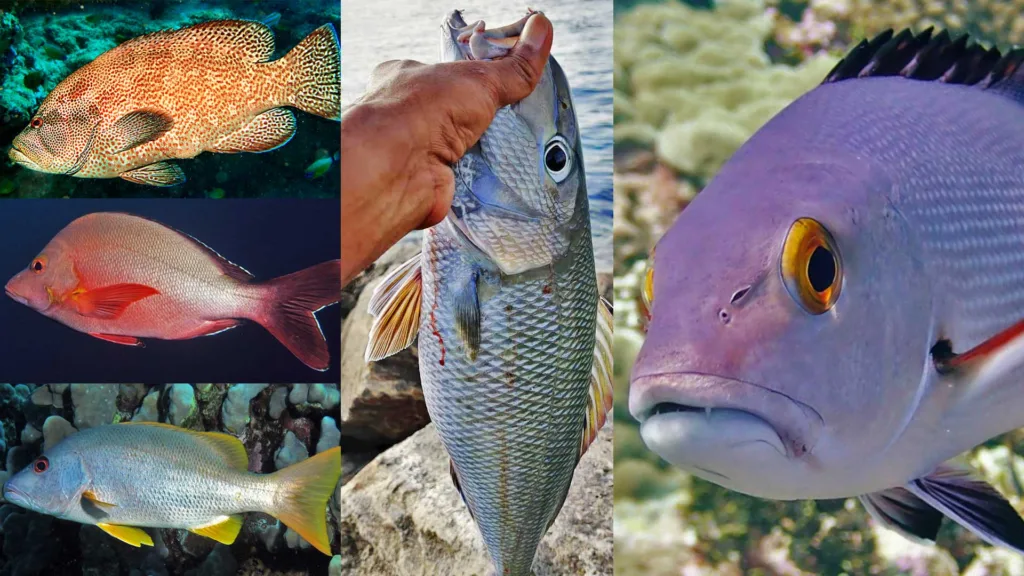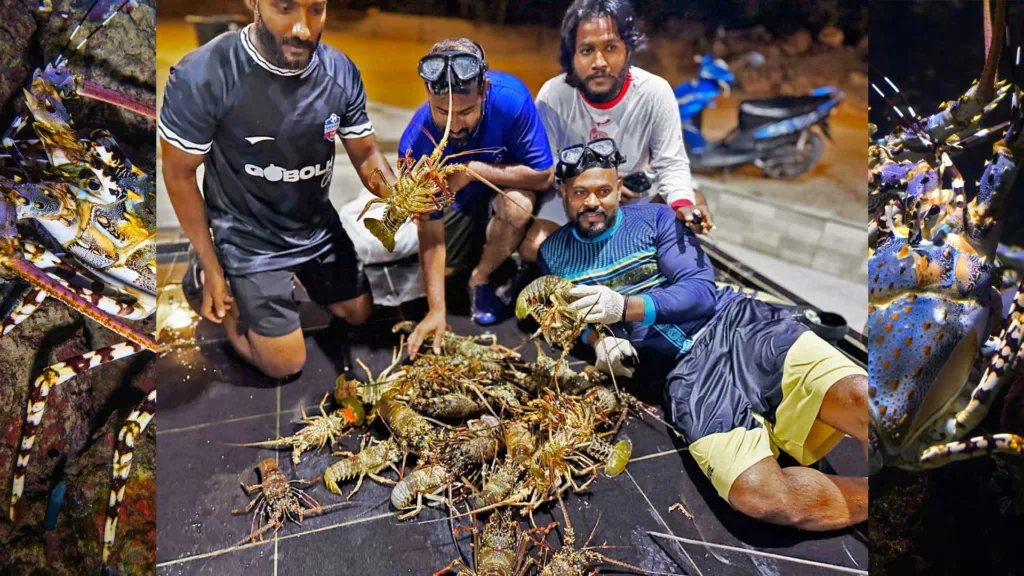
There is one fact that is so real: for any fish to strike a lure, the profile or the appearance of the lure has to be real. If the shape and look are natural, and if it imitates the action of a true live bait, the greater the chances are of the strikes from the predators. Yellowfin tuna have fast and sharp reflexes. If they encounter a likely bait, they will likely strike. Feather lures mimic the appearance of bait fish such as flying fish and anchovy. Tuna feathers are popular and widely used. The colorful feathers and reflective surface attract fish.
In the early days, feathers of roosters were used to make feather lures. Fishermen use the feathers from the back and neck area of the rooster. Different sizes of feather lures are made for different types of fish. According to fishermen from our island, Fuvahmulah, white feathers are most enticing. But to make a white feather lure is difficult because white roosters were rare on the island. However, fishermen used to poach the white roosters of households and pluck the feathers they wanted and release them. The angry owners of the roosters would give a sharp rebuke to the fishermen suspected of having caught the roosters.
Another important piece in making feather lures is the white part (madhogando in our dialect) inside the stem of the sea lettuce plant. The hook was rigged through the white part. And a small bamboo piece was used in which the feather and monofilament were held inside this hollow bamboo stem.
Later, even these days, the shape of a fish is cut out from nylon or silicone soccer balls. This fish is also attached to the hook.
Nylon slippers were also used to make the ‘fish.’ Two hooks were used for the first time in lures made of slippers.
The feather is attached to stainless steel wire of around three feet on fishing lines (vadho nano), and this was used during nighttime fishing. The steel wire of around six feet was used during daytime fishing.
Hungry tuna’s instincts would draw them towards these lures. These feathers were often trawled behind a fishing vessel. The disturbance created by the action of the lure and the movement of the fishing vessel presented a mimicking of a school of baitfish.
Feathers can be used in a variety of fishing conditions. It can be used in both shallow and deep water. These relatively cheap lures are a formidable weapon to land the famous predators of the sea.




